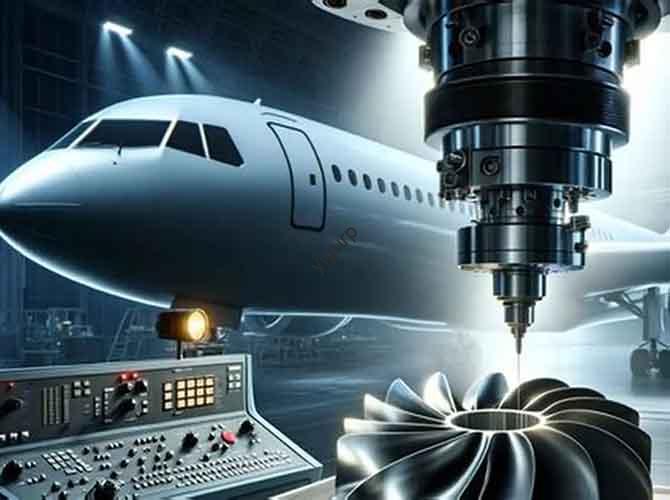Nella produzione, aluminum’s lightweight, resistente alla corrosione, and malleable properties make it a top choice for countless products. But unlocking its full potential requires advanced processing—and CNC aluminum product elaborazione consegna. This technology solves critical pain points like inconsistent precision, Produzione lenta, and limited design flexibility that plague traditional methods. Let’s dive into its core advantages, Applicazioni del mondo reale, and why it’s a game-changer for businesses.
1. Precisione senza pari: Meeting the Strictest Tolerances
When it comes to aluminum parts, even tiny deviations can ruin performance—especially in aerospace or medical fields. CNC aluminum processing eliminates this risk with ultra-high accuracy and rigorous quality control.
Key Precision Metrics & Practices
| Aspetto | Dettagli |
| Precisione di lavorazione | Achieves tolerances as tight as 0.01mm (più sottile di un capelli umano) |
| Passaggi di controllo di qualità | 1. Raw material inspection (PER ESEMPIO., alloy purity tests)2. In-process measurements with calipers or laser scanners3. Final checks via 3D/2D projectors |
| Riduzione degli errori | Computer-programmed toolpaths replace manual operation, cutting human error by 90%+ |
Real-World Need: Perché la precisione è importante
Imagine an aerospace aluminum component for a jet engine. If it’s even 0.1mm off, it could cause vibrations or fuel inefficiencies. CNC aluminum processing ensures every part meets these strict standards—no exceptions.
2. Complex Shape Processing: Turning Designs Into Reality
Traditional machining struggles with intricate aluminum structures (PER ESEMPIO., hollow frames, curved grooves). CNC aluminum product processing breaks these limits, thanks to multi-axis technology and advanced programming.
MACCHINAZIONE MULTI-ASSIS: What It Is and Why It Helps
- 3-Asse CNC: Handles basic 2D/3D shapes (PER ESEMPIO., piastre piatte in alluminio).
- 4-Asse CNC: Adds rotation for parts like cylindrical aluminum housings.
- 5-Asse CNC: Moves in 5 direzioni, enabling complex geometries (PER ESEMPIO., aerospace engine parts with angled holes).
Caso di studio: Shenzhen Weimate’s Capabilities
Shenzhen Weimate, a leading CNC manufacturer, usi 3, 4, and 5-axis machines to process aluminum parts. For a medical device client, they created a hollow aluminum surgical instrument handle—a design impossible with traditional methods. The 5-axis machine completed the part in one clamping, tagliare i tempi di produzione da 40% and ensuring uniform precision.
3. Diverse Surface Treatments: Boosting Performance and Aesthetics
Aluminum parts often need surface treatments to enhance durability or match brand aesthetics. CNC aluminum processing pairs seamlessly with a range of treatments, offering both function and customization.
Common Surface Treatments for CNC Aluminum Parts
| Tipo di trattamento | Vantaggi chiave | Applicazioni ideali |
| Anodizzante | Improves corrosion/wear resistance; adds colored/textured finishes | Consumer electronics shells, attrezzatura esterna |
| Spruzzatura | Offers wide color options; protects against scratches | Automotive aluminum trim, parti di mobili |
| Elettroplazione | Increases surface gloss and hardness | High-end audio aluminum casings, gioielli |
Esempio: Personalized Consumer Electronics
A smartphone brand wanted aluminum backplates with a matte black finish and brand logo. CNC aluminum processing first shaped the plates, then anodized them to the exact color—delivering 10,000 identico, scratch-resistant units.
4. Produzione efficiente: Inversione di tendenza più veloce, Costi inferiori
Per le aziende, time and money are critical. CNC aluminum product processing automates workflows and speeds up production, even for small batches or prototypes.
Production Efficiency Comparison: CNC vs. Macchina tradizionale
| Palcoscenico | CNC Aluminum Processing | Macchina tradizionale |
| Automation Level | 90%+ (auto tool change, speed adjustment) | 30–40% (heavy manual labor) |
| Prototype Delivery Time | 3–7 giorni | 2–3 settimane |
| Batch Production Speed | 500+ simple aluminum parts/day | 150–200 parts/day |
Why This Solves Business Problems
Una startup necessaria 50 aluminum prototypes for a new drone frame. Traditional machining would take 3 weeks—too slow to meet their investor deadline. CNC aluminum processing delivered the prototypes in 5 giorni, letting them launch on time.
5. Wide Industry Applications: From Skies to Hospitals
CNC aluminum product processing isn’t limited to one sector—it powers critical products across industries, Grazie alla sua versatilità.
Industry-Specific Uses & Benefici
| Industria | Common CNC Aluminum Parts | Key Advantages for the Industry |
| Aerospaziale | Componenti del motore, Parti strutturali dell'aeromobile | Leggero + alta precisione (meets FAA standards) |
| Automobile | Body frames, staffe del motore, chassis parts | Durevole + produzione rapida (supports car assembly lines) |
| Elettronica | Dissipatori di calore, device shells, circuit board holders | Customizable shapes + Buona conduttività termica |
| Medico | Maniglie degli strumenti chirurgici, medical bed frames | Sterilizzabile + preciso (soddisfa i requisiti della FDA) |
La prospettiva della tecnologia Yigu
Alla tecnologia Yigu, vediamo CNC aluminum product processing as the backbone of modern manufacturing. Our team has partnered with 200+ clients—from aerospace startups to medical device firms—to deliver CNC-machined aluminum parts. We’ve found that CNC cuts production costs by 25% on average while boosting part consistency to 99.8%. Guardando avanti, we’ll integrate AI into our CNC systems to further reduce lead times and expand design possibilities—helping more businesses unlock aluminum’s full potential.
Domande frequenti
- Q: What types of aluminum alloys work best with CNC processing?
UN: Most alloys (PER ESEMPIO., 6061, 7075, 5052) are CNC-friendly. 6061 is ideal for general parts (PER ESEMPIO., electronics shells), Mentre 7075 suits high-strength needs (PER ESEMPIO., componenti aerospaziali).
- Q: How much does CNC aluminum processing cost compared to traditional methods?
UN: For small batches/prototypes, CNC is 10–15% cheaper (nessun costo dello stampo). Per grandi lotti (10,000+ parti), costs are similar—but CNC offers better precision and faster delivery.
- Q: Can CNC aluminum parts be recycled after use?
UN: SÌ! L'alluminio è 100% riciclabile, and CNC processing produces minimal waste (only 5–10% scrap, contro. 30% per la lavorazione tradizionale). Recycled CNC aluminum retains its quality for new parts.
